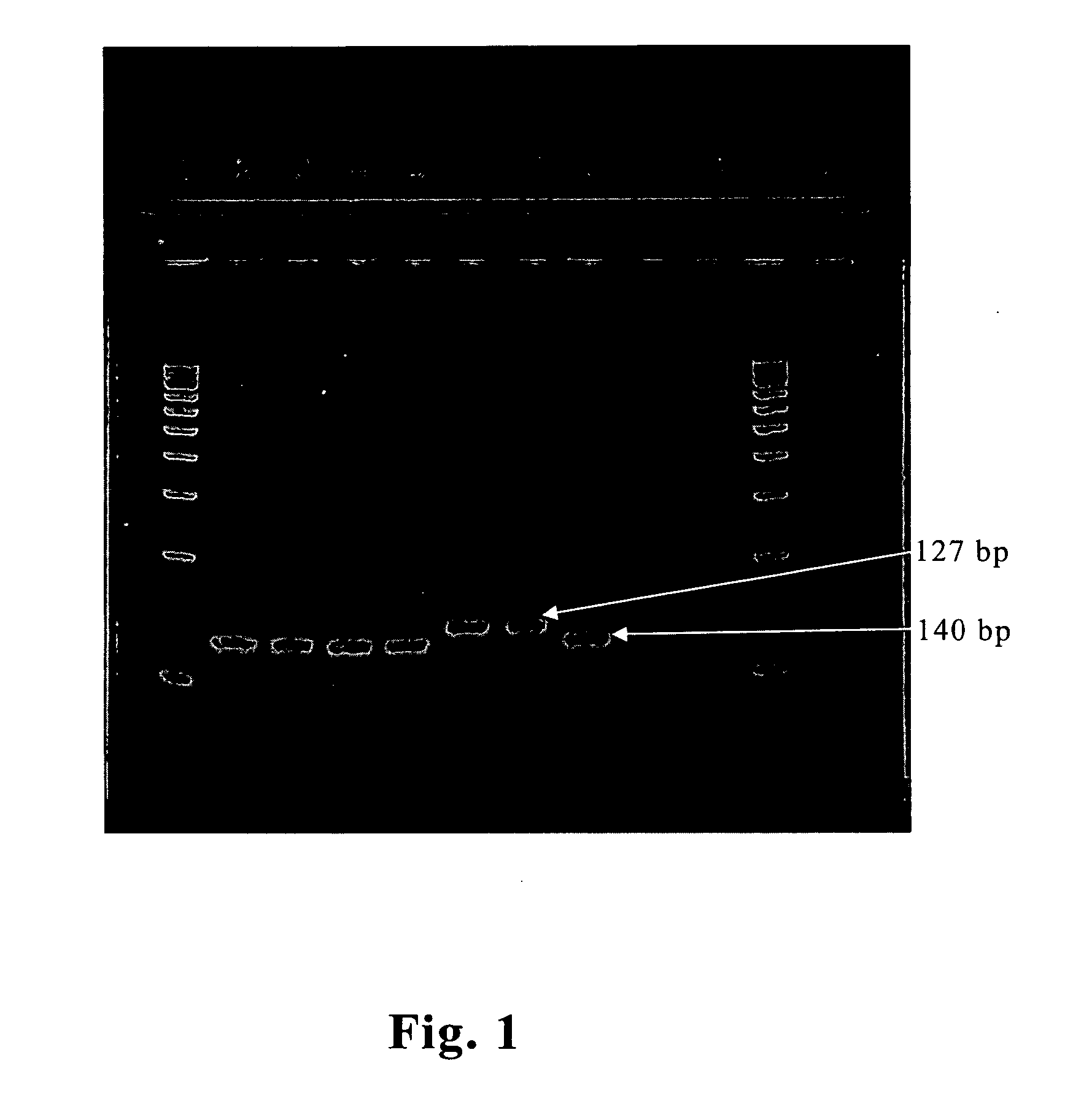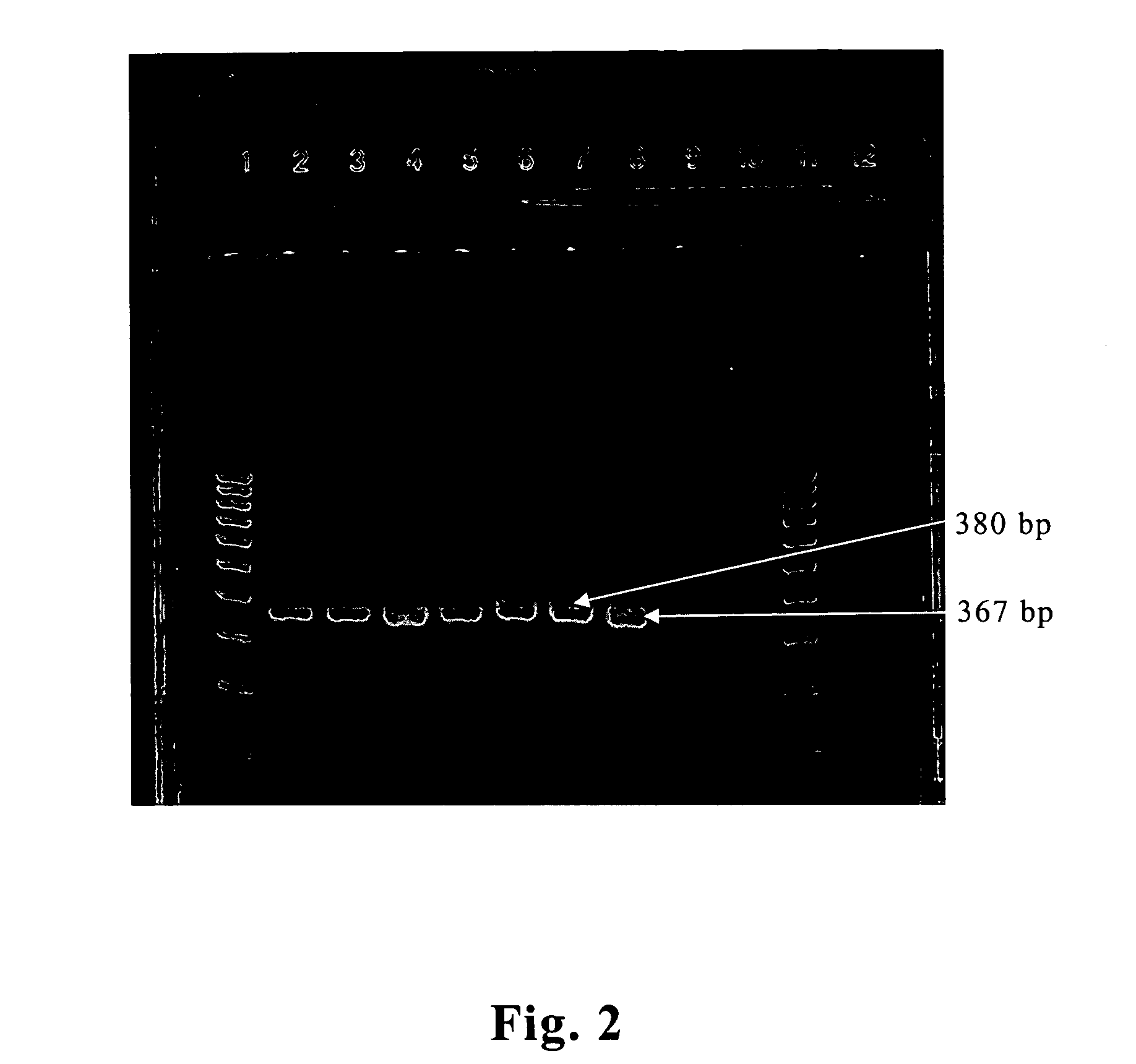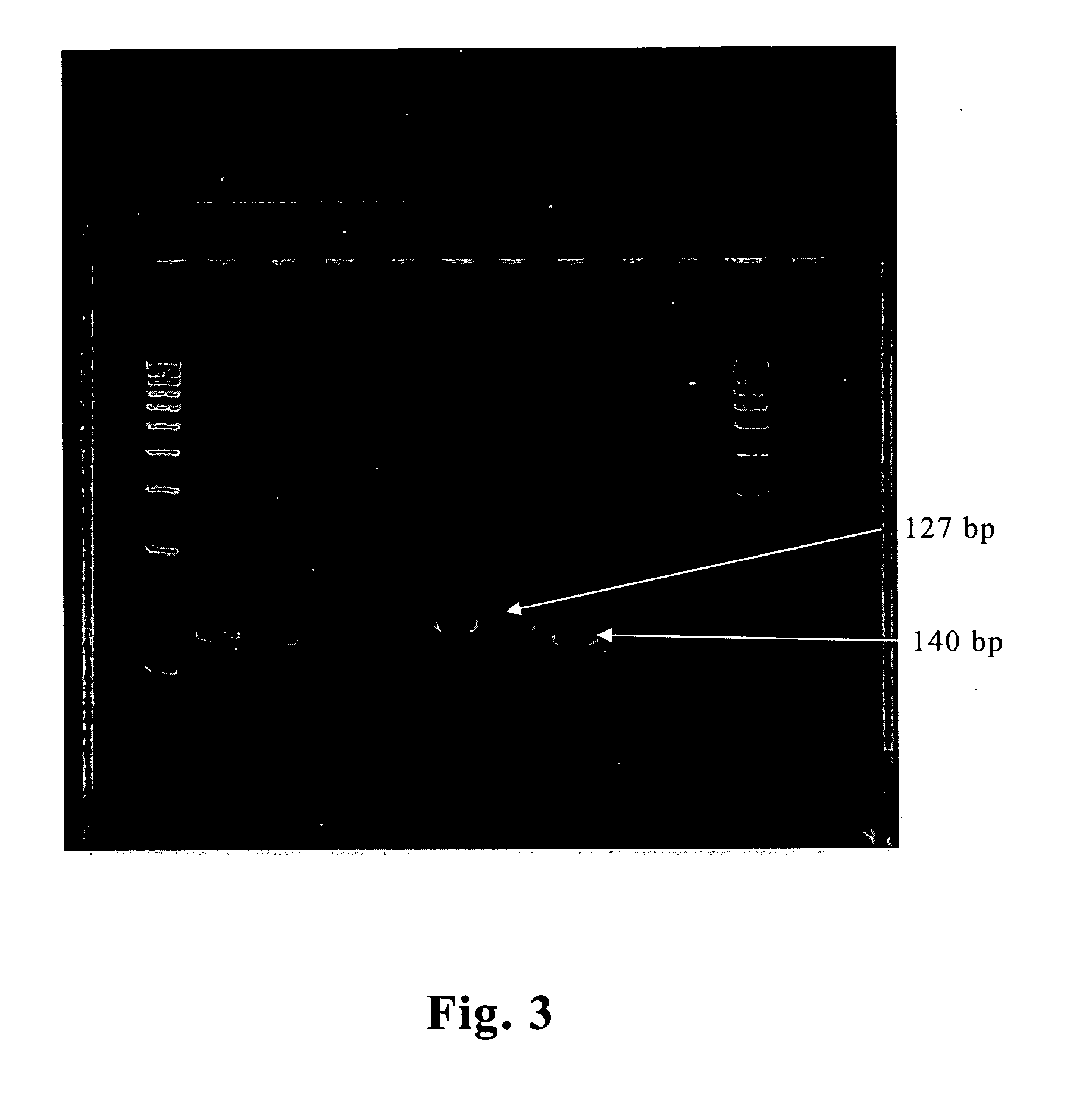RT-PCR detection for differential diagnosis of field isolates or lapinized vaccine strain of classical swine fever virus (CSFV) in samples
a diagnostic kit and classical swine fever virus technology, applied in the field of rt-pcr detection for differential diagnosis of field isolates or lapinized vaccine strains of classical swine fever virus (csfv) samples, can solve the problems of inability to differentiate vaccine virus from field isolates, inability to detect vaccine virus, interference with laboratory diagnostic methods for detection of csfv, etc., to achieve rapid differentiation
- Summary
- Abstract
- Description
- Claims
- Application Information
AI Technical Summary
Benefits of technology
Problems solved by technology
Method used
Image
Examples
example 1
[0027] A one-step RT-PCR for distinguishing the field isolates of CSFV from the lapinized CSF vaccine viruses.
[0028] (1) Design of the Primers
[0029] A pair of amplification primers is designed from the conserved sequence within 3′-untranslated region of CSFV. This primer is a CSFV specific primer, which can only amplify the CFS virus but not its two close relatives bovine viral diarrhea virus (BVDV) and border disease virus (BDV). This primer is also one of the universal primers, which can be used to amplify different genotypes of CSFV. The nucleotide sequence of this primer pair is as follows:
CP-3F(5′-ACCCTRTTGTARATAACACTA-3′)CP-3R(5′-GTTAAAAATGAGTGTAGTGTGGTA-3′)
[0030] (2) Virus Sources
[0031] The lymphatic tissues of internal organs of swine such as tonsil, lymph node and spleen are ground with a mortar, then MEM medium (minimal essential medium) is added to form a 10% (w / v) suspension. After 20 minutes of 3000×g centrifugation, the top layer is retrieved for performing the RT...
example 2
[0036] For increasing the sensitivity of the test, another method using nest-PCR is designed for distinguishing the field isolates of CSFV from the lapinized CSF vaccine virus in addition to the one- step RT-PCR to detect the CSFV. The method is as follows:
[0037] (1) Design of the Primers
[0038] A pair of amplification primers is designed from the outer side of the amplification region of the CP-3F and CP-3R primers. This pair of primers is CSFV specific primers, which only amplifies the CSFV but not the two close relatives, BVDV and BDV. This pair of primers is one of the universal primers designed from the conserved sequences of CSFV, i.e. it can be used for CSF virus of all genotypes. The nucleotide sequence of this pair of primers is as follows:
CP-55′-GTAGCAAGACTGGAAATAGGTA-3′CP-65′-AAAGTGCTGTTAAAAATGAGTG-3′
[0039] (2) Single-tube RT-PCR
[0040] Take 5 μL of the prepared nucleic acid sample, add the pair of CSFV specific primers CP-5 and CP-6 (20 pm), 5 μL of 10× Super Thermal ...
PUM
| Property | Measurement | Unit |
|---|---|---|
| Fraction | aaaaa | aaaaa |
| Size | aaaaa | aaaaa |
Abstract
Description
Claims
Application Information
 Login to View More
Login to View More - R&D
- Intellectual Property
- Life Sciences
- Materials
- Tech Scout
- Unparalleled Data Quality
- Higher Quality Content
- 60% Fewer Hallucinations
Browse by: Latest US Patents, China's latest patents, Technical Efficacy Thesaurus, Application Domain, Technology Topic, Popular Technical Reports.
© 2025 PatSnap. All rights reserved.Legal|Privacy policy|Modern Slavery Act Transparency Statement|Sitemap|About US| Contact US: help@patsnap.com



